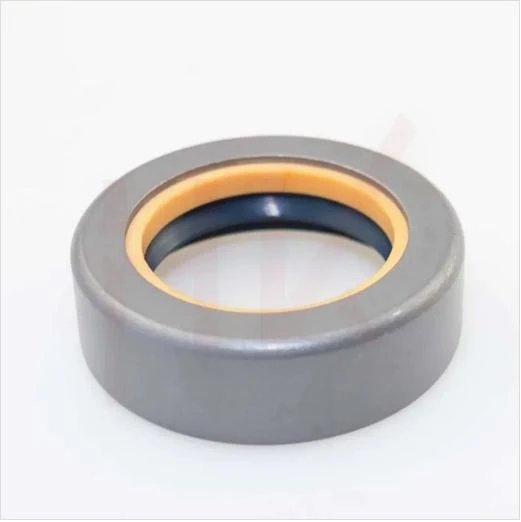dec . 05, 2024 14:34 Back to list
hydraulic seal repair
Hydraulic Seal Repair A Comprehensive Guide
Hydraulic systems are integral to many industries, powering machinery, equipment, and vehicles alike. At the heart of these systems are hydraulic seals, which play a crucial role in maintaining pressure and preventing fluid leakage. However, hydraulic seals are subject to wear and tear due to various factors including heat, pressure, and contamination. When a hydraulic seal fails, it can lead to inefficient system performance and costly downtime. Therefore, understanding the repair process for hydraulic seals is essential for maintaining operational efficiency.
Understanding Hydraulic Seals
Hydraulic seals are designed to prevent hydraulic fluid from leaking out of the hydraulic cylinder while also preventing external contaminants from entering the system. They come in various shapes and sizes, including O-rings, flat seals, and V-packing. The choice of seal depends on the specific application, the type of hydraulic fluid being used, and the operational environment.
Over time, hydraulic seals can develop leaks due to several reasons
1. Wear and Tear Constant exposure to high pressure and temperature can cause seals to deteriorate. 2. Contamination Dirt, dust, and other foreign materials can compromise the integrity of seals. 3. Improper Installation Incorrect fitting can lead to undue stress on seals, causing premature failure. 4. Chemical Reaction Some hydraulic fluids can cause seals to swell, shrink, or become brittle over time.
Signs of Hydraulic Seal Failure
Identifying hydraulic seal failure early can save you time and money. Common signs include
- Fluid Leaks Visible fluid around the seals or accumulating under the machinery. - Decreased Performance Sluggish or unresponsive machinery can indicate a loss of pressure. - Noise Unusual sounds during operation can suggest irregularities in the hydraulic system. If you notice any of these signs, it’s crucial to act quickly to avoid further damage to the system.
Repairing Hydraulic Seals
The repair process for hydraulic seals can be broken down into several steps
hydraulic seal repair

1. Diagnosis Before proceeding with any repairs, it’s essential to diagnose the cause of the seal failure. This may involve a visual inspection, pressure testing, and checking for contamination in the hydraulic fluid.
2. Disassembly Once the issue is diagnosed, the hydraulic system should be safely disassembled. Ensure that all pressure is released from the system and that proper safety measures are in place.
3. Inspection Examine the hydraulic seals for signs of wear, damage, or contamination. It's also important to check the surfaces where seals are installed, as scratches or imperfections can lead to sealing issues.
4. Replacement If the seals are damaged beyond repair, they should be replaced. Use seals that meet OEM (Original Equipment Manufacturer) specifications to ensure compatibility. When installing new seals, it's essential to apply lubricants as recommended to facilitate easier installation and longer seal life.
5. Reassembly and Testing After replacing or repairing the seals, reassemble the hydraulic system, ensuring that all components are fitted correctly. Once reassembled, perform a pressure test to verify that there are no leaks and that the system operates as expected.
Prevention of Seal Failure
To minimize the risk of hydraulic seal failure in the future, consider the following preventive measures
- Regular Maintenance Schedule routine inspections and maintenance to catch potential issues early. - Fluid Quality Use high-quality hydraulic fluids and change them as recommended to prevent contamination. - Proper Installation Train personnel on the correct installation procedures to avoid damage during assembly.
Conclusion
Hydraulic seal repair is a critical aspect of maintaining hydraulic systems. By understanding the signs of seal failure, promptly repairing or replacing seals, and implementing preventive measures, you can extend the life of your hydraulic systems and enhance operational efficiency. Regular maintenance and attention to detail will not only save costs but also ensure that your machinery operates smoothly and effectively.
-
The Trans-formative Journey of Wheel Hub Oil Seals
NewsJun.06,2025
-
Graphene-Enhanced Oil Seals: Revolutionizing High-Pressure Oil Sealing
NewsJun.06,2025
-
Future of Hydraulic Sealing: Advanced Intelligent TCN Oil Seals
NewsJun.06,2025
-
Don’t Let a Broken TCV Oil Seal Ruin Your Day
NewsJun.06,2025
-
Bio-Inspired Dust Seals for Better Sealing Performance
NewsJun.06,2025
-
Biodegradable and Sustainable Hydraulic Seal Materials
NewsJun.06,2025
-
Top Oil Seal Solutions for Your Industrial Needs
NewsMay.22,2025
Products categories
















